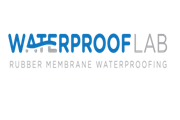Waterproofing is an essential consideration for anyone who is building a basement which they intend to use for storage or habitable accommodation.
Too often basement waterproofing is not given high enough priority and as a result a cheap and inappropriate basement waterproofing option is used to try and get inside an unrealistic budget. This often leads to failure and the resultant consequential losses can be disastrous for the owner of the building or property.
New build basements are often designed and built from well graded and even ‘waterproof concrete’, concrete block or blocks with concrete infill. A well designed and built structure will generally form the primary resistance to water ingress as the concrete is too dense for water to pass through. However we must always be mindful that where there are construction joints there is risk of failure even if waterbars, hydrophilic/hydrophobic strips are well installed.
With this borne in mind it is always a recommendation that as well as the structure itself, a secondary form of basement waterproofing is adopted even if the structure is new and/or built from ‘waterproof concrete’.
When the concrete construction itself is considered to be integrally waterproof this is described as type B form of basement waterproofing https://waterprooflab.co.za/box-gutter-waterproofing/.
Where the structure is not considered to be integrally waterproofing then we have 2 options for dealing with the potential for water ingress. One is to Tank it and the other is to waterproof it with a Cavity Drain Membrane.
Tanking a basement means that a product is applied internally or externally and is designed to physically stop and hold back the water. This is referred to as Type A basement waterproofing.
A Cavity Drain Membrane system is applied to the internal face of the earth retaining structure where it can accept the ingress of water depressurise it and manage it to a safe evacuation point. This is referred to as type C form of basement waterproofing.
Tanking as a form of basement waterproofing to new structures has inherent risks. Whether you apply it internally or externally to the structure tanking systems need to be applied 100% defect free to be affective, if water is delivered under pressure against the structure. As dispute and High Court case between two companies Outwing Construction and Thomas Weatherald has set a precedent in the basement waterproofing industry and UK law. The ruling in the High Court of Justice was that it is not reasonable for a tanking or waterproofing system to be applied 100% defect free. What this means is that if you design for or apply a basement waterproofing system to the structure which needs to be 100% free of defects to work and it fails you can be liable for the consequences of that failure. By their very nature all tanking systems need to be 100% defect free to work when tested by water under pressure from the ground https://waterprooflab.co.za/box-gutter-waterproofing/.
Most new build basement waterproofing designs that incorporate an external tanking system also include a land drain the purpose of which is to help de-water the surrounding ground areas and reduce the level of water which is delivered against the structure. There are often many associated problems with land drains used in basement waterproofing. A land drain should be positioned on the outside of the structure below the level of the internal slab so that it helps to relieve the volume of water to the full depth of the retained soil. Many times the position of the land drain is shown on a drawing or installed above the internal slab level and therefore could only ever be partially effective.

‘The form and feasibility of remedial treatment’ is a buzz phrase in the basement waterproofing industry. It means if there is a problem having the ability to get back to something to identify where and what the problem is and then rectify it. This is a problem with both external tanking and land drains as they are often buried under tonnes of earth. The size of the land drain is another issue as who can accurately predict the volume of water which could be expected to come to have at any time in the future? Also as stated the tanking system may rely heavily on the land drain and how can anyone guarantee it against defect or blockage in the future – again the form and feasibility of remedial treatment comes into question.
The BS8102:2009 (British Standard code of practice for protection of below ground structures against water from the ground) recommends a maintainable basement waterproofing system. A buried external tanking system and land drain are not easily often maintainable.
Building a strong basement structure to form the primary resistance against water is a good idea but where there are construction joints we must expect that water ingress could occur at some point. Therefore a more reliable form of secondary waterproofing other than the structure itself is a cavity drain membrane system or Type C basement waterproofing.
Cape Town
Waterproof Lab EPDM Rubber Waterproofing
22 Plantation Rd, Ottery, Cape Town, 7708
0870125339
https://waterproof-lab-epdm-rubber-waterproofing.business.site/
